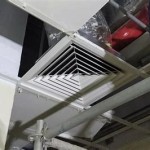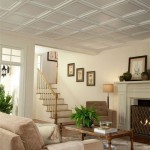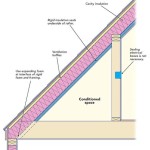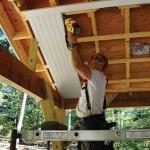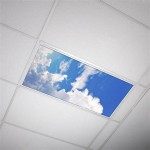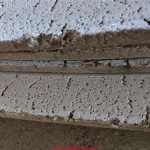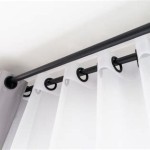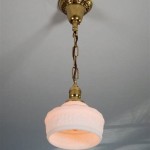Is Beadboard Good For Ceilings? Exploring the Pros, Cons, and Installation
Beadboard, a decorative paneling characterized by its vertical grooves and raised beads, has long been a popular choice for walls and wainscoting. However, its application extends beyond these traditional uses, leading many to consider it as a potential ceiling treatment. The suitability of beadboard for ceilings depends on various factors, including aesthetic preferences, structural considerations, and the specific type of beadboard being used. This article aims to provide a comprehensive overview of beadboard's potential benefits and drawbacks as a ceiling material, along with practical advice on installation and relevant considerations.
The appeal of beadboard ceilings stems from their ability to add texture, visual interest, and a touch of classic charm to a room. Beadboard can effectively conceal imperfections in the existing ceiling surface, such as cracks or unevenness. Furthermore, it can be painted to match existing décor or left in its natural wood finish for a rustic aesthetic. While its visual advantages are evident, a thorough evaluation of its practicality and suitability for a particular space is crucial before making a decision.
Aesthetic and Design Considerations
The primary advantage of using beadboard on ceilings lies in its aesthetic contribution. It imparts a distinct character and elevates the overall design of a room. Unlike flat, unadorned ceilings, beadboard provides depth and visual texture. This can be particularly effective in spaces where a more traditional, cottage-style, or farmhouse aesthetic is desired. The vertical lines of the beadboard can also create an illusion of height, making a room feel more spacious, especially when installed in a direction that complements the room's dimensions.
Beadboard ceilings offer versatility in terms of design finishes. They can be painted in a wide range of colors to perfectly coordinate with other elements in the room. White beadboard provides a clean, classic look that is timeless and readily adaptable to various design schemes. Alternatively, darker colors can create a more dramatic and cozy atmosphere. Wood-stained beadboard, whether it’s a natural stain or a colored stain, brings a warm, rustic touch to the room. The options are plentiful and depend on the desired ambiance.
The spacing between the beads also plays a crucial role in the overall aesthetic. Beadboard with closely spaced beads offers a more refined and subtle texture, while wider spacing creates a bolder and more prominent pattern. Choosing the appropriate bead spacing is essential to achieving the desired effect and ensuring that the beadboard complements the other design elements in the room. The choice of material further influences the aesthetic; wood offers a traditional look, while MDF or PVC options can provide a more contemporary and durable alternative.
Practical Considerations: Installation, Cost, and Maintenance
While beadboard ceilings offer significant aesthetic advantages, practical factors such as installation complexity, cost implications, and ongoing maintenance requirements must be carefully considered. The installation process can be more involved compared to simply painting a ceiling, and the cost of materials and labor can add up, especially for larger rooms. Furthermore, beadboard ceilings, particularly those made of wood, require regular maintenance to prevent moisture damage and ensure their longevity.
The installation of beadboard on ceilings generally involves attaching the panels to furring strips or directly to the existing ceiling joists. This requires accurate measurements, cutting, and fastening skills. Proper preparation of the ceiling surface is crucial to ensure a smooth and even base for the beadboard. The use of construction adhesive, in addition to nails or screws, is recommended to securely attach the panels and prevent them from sagging or coming loose over time.
Cost is a significant factor in the decision-making process. Beadboard panels can vary widely in price depending on the material (wood, MDF, PVC), thickness, and quality. Labor costs for installation can also vary depending on the complexity of the project and the experience of the installer. It's important to obtain multiple quotes from reputable contractors and carefully evaluate the total cost of the project before proceeding. Beyond the initial installation, ongoing maintenance costs should also be considered. Wood beadboard, for example, may require periodic painting or staining to maintain its appearance and prevent moisture damage.
Maintenance considerations are also essential. Wood beadboard is susceptible to moisture damage, especially in bathrooms or kitchens with high humidity levels. Proper ventilation is crucial to prevent the growth of mold and mildew. MDF beadboard is more resistant to moisture than solid wood but can still be damaged by prolonged exposure to water. PVC beadboard is the most moisture-resistant option and is ideal for bathrooms, kitchens, and other areas with high humidity levels. However, it may not offer the same aesthetic appeal as wood or MDF. Regular cleaning with a mild detergent and water is generally sufficient to keep beadboard ceilings looking their best.
Material Choices: Wood, MDF, and PVC
The choice of material for beadboard ceilings has a significant impact on its appearance, durability, and cost. The three most common materials used for beadboard are wood, medium-density fiberboard (MDF), and polyvinyl chloride (PVC). Each material has its own unique properties and advantages that should be carefully considered before making a decision.
Wood beadboard offers a classic and authentic look, with natural variations in grain and color that add character to the ceiling. It is also relatively easy to work with and can be stained or painted to achieve a wide range of finishes. However, wood is susceptible to moisture damage and can warp or rot if exposed to high humidity levels. It also tends to be more expensive than MDF or PVC beadboard. Solid wood beadboard is typically used in high-end applications where aesthetics are paramount.
MDF beadboard is a more affordable alternative to solid wood. It is made from compressed wood fibers and resin, resulting in a smooth and uniform surface that is ideal for painting. MDF is also less prone to warping or cracking than solid wood. However, it is still susceptible to moisture damage and should not be used in areas with high humidity levels unless properly sealed and protected. MDF is a popular choice for general residential applications where a balance between cost and aesthetics is desired.
PVC beadboard is the most durable and moisture-resistant option. It is made from plastic and is impervious to water, making it ideal for bathrooms, kitchens, and other areas with high humidity levels. PVC beadboard is also lightweight and easy to install. However, it may not offer the same aesthetic appeal as wood or MDF. It also has a more artificial appearance and may not be suitable for applications where a natural wood look is desired. PVC beadboard is often chosen for its practicality and ease of maintenance in moisture-prone environments.
When considering whether beadboard is a suitable option for ceilings, evaluating the various factors like aesthetics, costs, and material properties should be carefully considered. By balancing the desire for visual appeal with practical concerns such as installation complexity and maintenance requirements, it is possible to determine if beadboard is the right choice for the ceiling.

Beadboard Ceiling Panels Ceilings Armstrong Residential

9 Beadboard Ceiling Design Ideas Allura Usa

How To Install A Beadboard Ceiling Pine And Prospect Home

How To Install A Beadboard Ceiling Pine And Prospect Home

Diy Beadboard Ceiling Tutorial Easy And Inexpensive Custom Treatment

Beadboard Ceiling Panels Ceilings Armstrong Residential

How To Install Beadboard Panels On A Ceiling And Why We Ll Never Do It Again The Lake Land
A Better Alternative To Wood Beadboard For Exterior Porch Ceilings Allura Usa

Beadboard Ceiling What It Is And How To Install Yourself

Beadboard Ceiling Panels Ceilings Armstrong Residential
Related Posts

